WMT #6: Ginnel or Snicket?

The 6th cache of the series, a small camo-taped, screw-capped pot, is hidden along this unnamed steep partially cobbled snicket or ginnel which makes its way up from Low Banks to Barley Cote.
Both these terms for a type of narrow access are northern dialect where ginnel is 'a narrow passageway or alley between or through buildings' and snicket 'a passageway between walls or fences' or 'a narrow passage between houses, an alley-way'.

If asked the question 'What is the difference between a ginnel & a snicket', ChatGPT responds 'A snicket and a ginnel are both terms used in the north of England to refer to a narrow passage or alleyway between buildings. They are often used interchangeably, although some people may use "snicket" to refer specifically to a passage that is closed at one or both ends, and "ginnel" to refer to an open passage that leads to a larger street or area. Both terms are generally used to describe small, cramped, and often poorly lit areas, usually found in urban areas'.
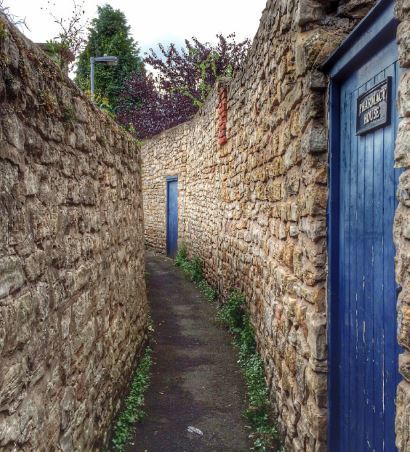
Example of the use of these and related terms in Northern England include:
York: The Snickelways of York are a collection of small streets, footpaths, or lanes between buildings, not wide enough for a vehicle to pass down, and usually public rights of way. York has many such paths, mostly mediaeval, though there are some modern paths as well. They often have quirky names such as Mad Alice Lane, Nether Hornpot Lane and even Finkle Street (formerly Mucky Peg Lane).
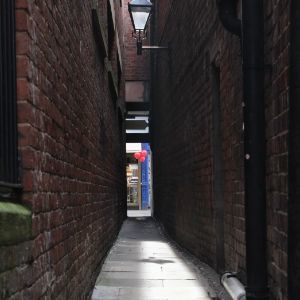
The word was coined by local author Mark W. Jones in 1983 in his book A Walk Around the Snickelways of York, and is a portmanteau, a blend of the words snicket, meaning a passageway between walls or fences, ginnel, a narrow passageway between or through buildings, and alleyway, a narrow street or lane. Although a neologism, the word quickly became part of the local vocabulary, and has even been used in official council documents. See here for a photoblog on the Snickleways of York.
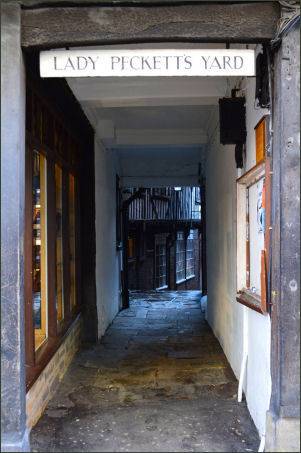
Whitby: ghauts. Scunthorpe, Lincolnshire, Goole and Hull: cuttings, 8-foots, 10-foots, and snicket. North Yorkshire, County Durham, Scotland, an alley can be a wynd. There is a Bull Wynd in Darlington and Lombards Wynd in Richmond. Durham: narrow city passages are also known as vennels. Several still exist providing steep shortcuts between the major streets.
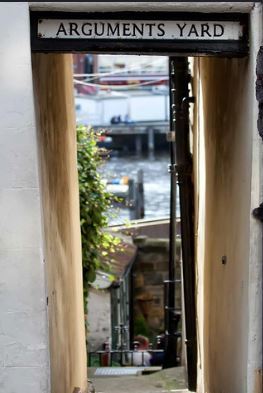
NE England: alleys can be called chares. The chares and much of the layout of Newcastle's Quayside date from medieval times. At one point, there were 20 chares in Newcastle. After the great fire of Newcastle and Gateshead in 1854, a number of the chares were permanently removed although many remain.
Greater Manchester, Sheffield, Leeds, Preston and parts of Yorkshire: jennel, which may be spelled gennel or ginnel, is common. Ginnel may also be used to describe a covered or roofed passage, as distinct from an open alley.

Liverpool, Merseyside: the terms entry, jigger or snicket are more common. Entry is also used in some parts of Lancashire and Manchester, though not in South Manchester. This usually refers to a walkway between two adjoining terraced houses, which leads from the street to the rear yard or garden.
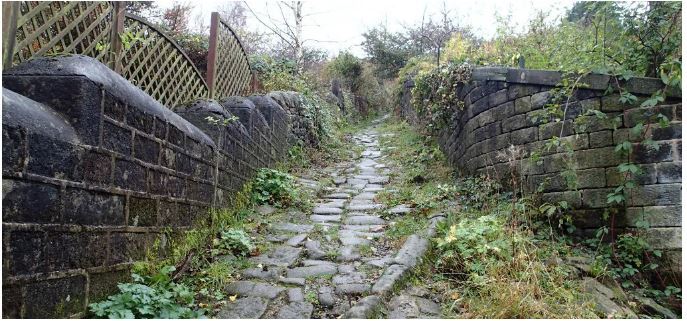
The Yorkshire Historical Dictionary states in the entry for the word ginnel 'many dialect words have been lost in recent times but 'ginnel' survives in good health, acceptable in polite conversation and even in newspaper articles'.
See here for an online discussion on the topic.
So, what would you call it??
